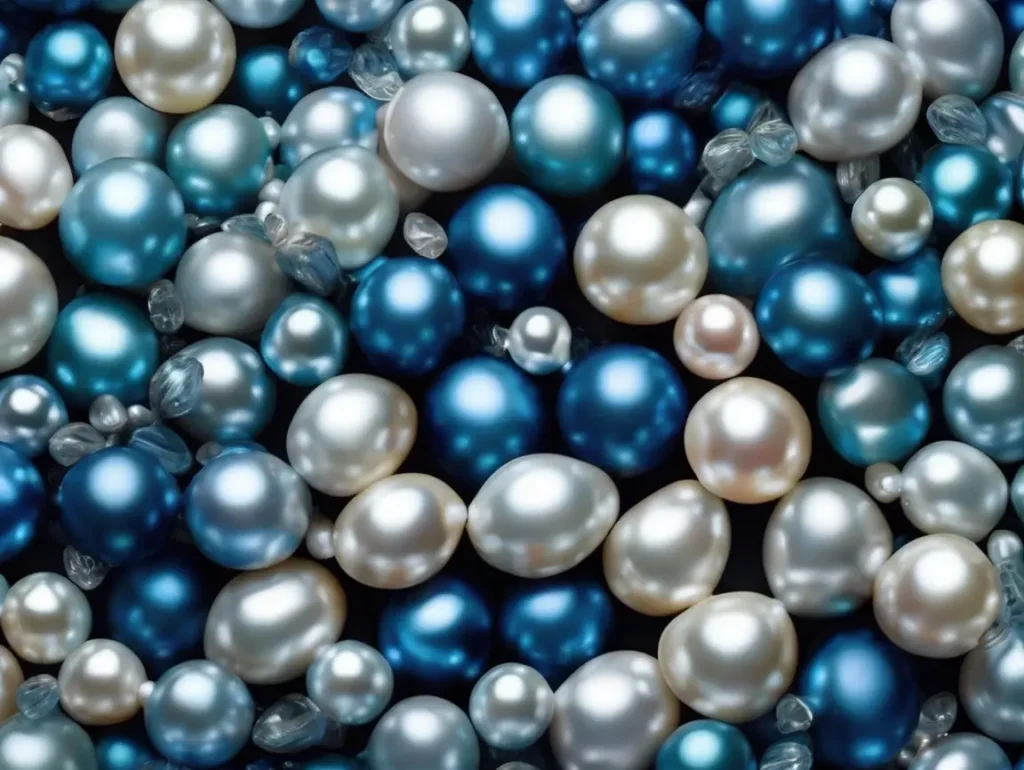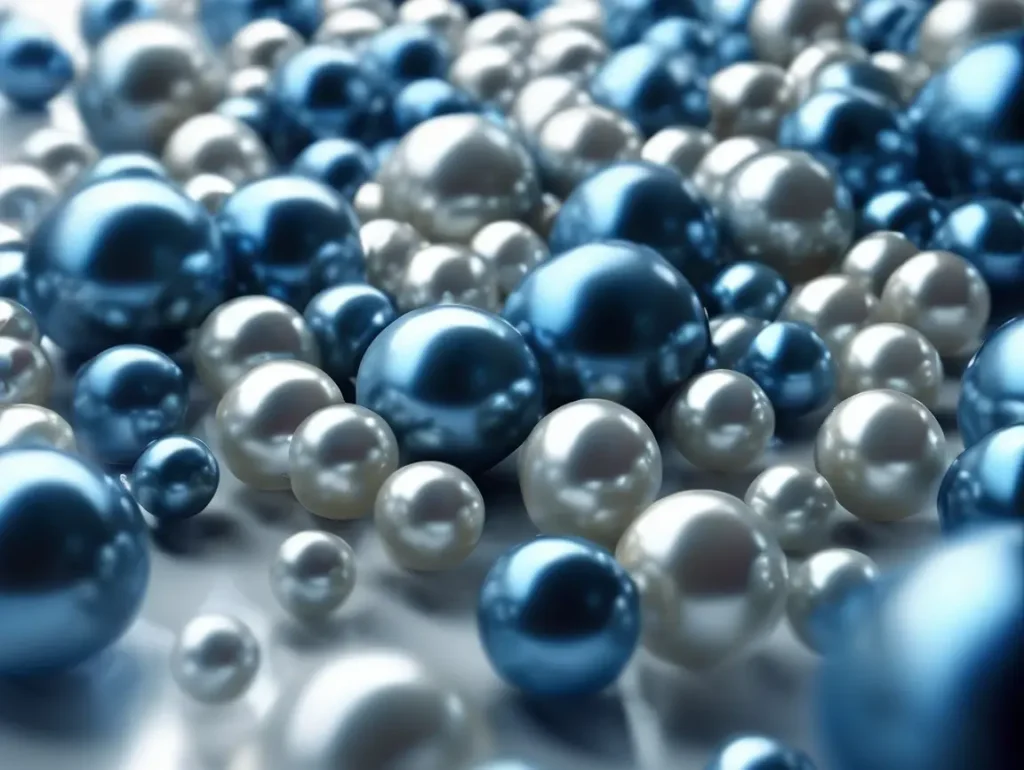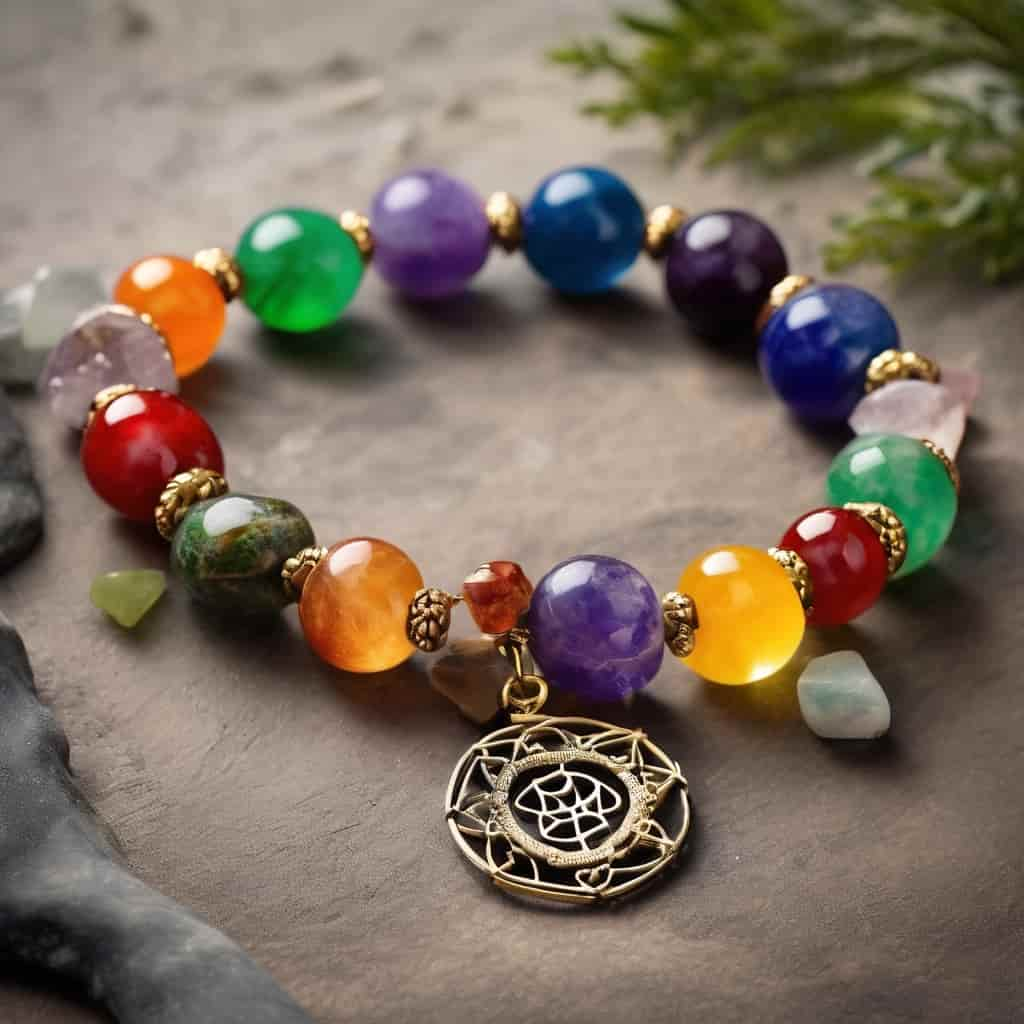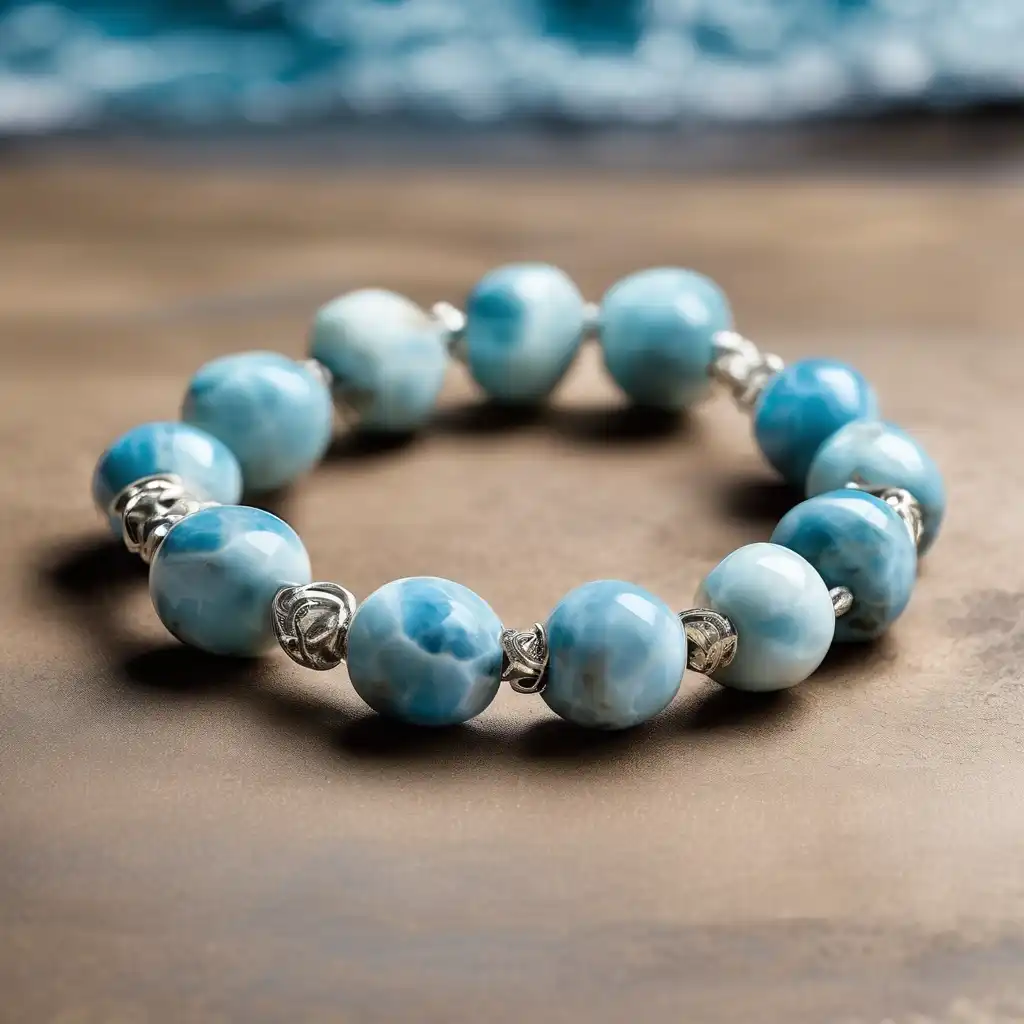Blue Pearls: Rare Beauty, Real Meaning
The Emotional Allure of Blue Pearls
The Quiet Power of Blue Pearls
There’s something almost poetic about blue pearls. They aren’t just jewelry — they’re feelings made visible, emotions strung into form. When you hold one, or wear one, you’re not just accessorizing. You’re making a statement of calm, grace, and individuality. Blue pearls evoke a kind of quiet elegance that doesn’t shout for attention but commands it nonetheless.
While white pearls have long symbolized purity and black pearls mystery, blue pearls sit somewhere in between — like a serene pause in a world of noise. Their soft, cool tones feel like ocean air at sunrise or the sky moments before dusk. It’s no surprise that so many people find themselves drawn to blue pearls when they’re seeking not just beauty, but meaning.
A Gem That Resonates with Emotion
The appeal isn’t just visual. There’s an emotional resonance. Many wearers say they feel more composed, more in tune, more confident when they wear blue pearls. It’s not unlike wearing a favorite scent — subtle, but powerful. The way royal blue pearl reflect light — never too bright, never too dull — mirrors the kind of presence many people wish to embody: graceful, collected, and quietly magnetic.
From a designer’s point of view, blue pearls are a dream. Their unique hue pairs well with a broad range of materials, whether you’re setting them in sterling silver, warm gold, or even raw leather for a more natural boho look. You can go ultra-classic or incredibly modern, and blue pearls always hold their own.
A Personal Connection Through Color
For many wearers, royal blue pearl become deeply personal. They’re given as anniversary gifts, worn during important milestones, or chosen as the “something blue” in weddings. There’s a sense of presence in blue pearl color that feels grounding, almost spiritual. Unlike diamonds or rubies, which often carry the weight of luxury and status, blue pearls speak to inner depth. They don’t try to impress — they connect.
People often describe blue pearls as “gentle reminders” of something — a person, a place, a moment. It’s no wonder they’re becoming a go-to choice for designers looking to create jewelry with soul, not just sparkle.
Timeless Beauty That Adapts to You
From daily wear to evening elegance, royal blue pearl adapt. Slip a single blue pearl on a chain, and it’s effortlessly chic. Wrap a strand around your wrist or neck, and it becomes an eye-catching centerpiece. Whether minimalist or dramatic, these gems have a way of enhancing style without overtaking it. It’s the ultimate balance: subtle, yet unforgettable.
But perhaps the most magical thing about blue pearl is how they make you feel. Not loud or flashy, but present. Not predictable, but undeniably beautiful. That’s what keeps people coming back to them — not just for their look, but for how they quietly elevate everything they touch.
If you’ve ever worn one, you know what I mean. And if you haven’t yet, the moment you do, you’ll understand. Blue pearls don’t follow trends — they live in their own rhythm. And maybe that’s why they feel so timeless.
Are Blue Pearls Real and Where Do They Come From?
The Truth Behind Blue Pearl: Natural or Not?

When people first come across blue pearl, one of the most common questions they ask is, “Are these even real?” It’s understandable — blue isn’t a color you typically associate with pearls. White, yes. Black, sure. But blue? It feels almost too magical to be natural. But here’s the truth: yes, blue pearls are real, and their beauty is rooted in science, not just design.
Pearls form inside mollusks — oysters or mussels — as a natural defense mechanism. When a foreign object (like a grain of sand or a parasite) enters the shell, the mollusk responds by coating it with layers of nacre, also known as mother-of-pearl. Over time, these layers build up and form a pearl.
Now, the color of a pearl — including blue — depends on many factors: the species of mollusk, water temperature, the environment’s mineral content, and even the angle at which light hits the nacre. In very specific and rare conditions, a blue hue can emerge, either as a soft silvery tint or a deeper oceanic tone. That’s why natural blue pearls are so sought-after: not only are they real, but they’re also rare.
New Zealand and the Rise of Pacific Blue Pearls
While blue pearl can occur in various parts of the world, one of the most renowned sources is New Zealand, particularly around the Cook Islands. Here, a species of oyster known as Pinctada margaritifera produces some of the most stunning naturally blue-toned pearls found anywhere.
Often referred to as Pacific blue pearls or New Zealand blue pearls, these gems are known for their range of shades — from ice-blue and silver-blue to deep peacock hues. Their luster is often sharp, clean, and highly reflective, which makes them stand out in both minimalist and high-end luxury designs.
The farming methods in this region also contribute to the pearls value. The cultivation process is sustainable, carefully managed, and respectful of marine ecosystems. It takes several years for a single pearl to form, and farmers often monitor each mollusk individually. That level of care, combined with natural rarity, is part of what gives blue pearl their incredible worth and appeal.
If you’ve ever seen a strand of Pacific blue pearl in person, you’ll know they carry a glow that’s hard to capture in photos. It’s a kind of living iridescence — not loud, but endlessly layered. That subtle radiance is what makes designers fall in love with them, and why collectors go out of their way to source them.
Cultured vs Dyed: How to Tell the Difference
Of course, as with any beautiful natural resource, there are imitations. The jewelry market is full of dyed pearls — white or cream pearls that have been chemically treated to look blue. These are typically cheaper, easier to find, and often used in mass-market jewelry.
So, how do you tell the difference between genuine blue pearl and the dyed versions?
- Surface sheen: Natural blue pearls have a layered, organic glow. Dyed pearls tend to look flatter, or artificially shiny.
- Color uniformity: Real pearls rarely have a perfectly uniform shade. That subtle variation is a sign of authenticity. If every pearl looks exactly the same, it’s probably dyed.
- Price point: Let’s be honest — natural blue pearls are not cheap. If the price seems too good to be true, it probably is.
Another great tip? Ask where the pearls came from. Reputable sellers will proudly share details about the origin, whether it’s New Zealand, the Philippines, or the South Pacific. Ethical pearl farmers also provide certification or transparency about the sourcing method.
The bottom line: blue pearls are very real, and when you find genuine ones, you’re holding a piece of nature that took time, care, and rare conditions to exist. That’s part of their charm — they’re not just beautiful; they’re miraculous.
Whether you’re a collector, designer, or someone who just loves meaningful jewelry, knowing the story behind your stones matters. And with blue pearl, that story is especially captivating — a tale of ocean currents, patient cultivation, and natural beauty that refuses to be replicated.
Watch: What Real Blue Pearls Look Like
This short video captures the visual beauty of blue pearls in various shades and lighting.
Blue Pearl Types, Shades, and Jewelry Styles
A Spectrum of Blue: From Silver Tints to Deep Ocean Hues
Not all blue pearls look the same. In fact, part of what makes them so mesmerizing is the sheer range of tones they can take on. From soft, silvery pastels to rich midnight blues, the spectrum is vast — and each shade carries its own personality.
The most common variety is often called silver-blue pearl. These have a delicate, almost icy glow that gives them a soft and elegant appearance. They pair beautifully with white gold or platinum, and are especially favored in bridal jewelry for their subtle sophistication.
Then there are dark blue pearl, which lean into a moodier, more dramatic palette. These pearls make a bolder statement and are often featured in high-end couture collections. Their mysterious depth makes them a favorite among collectors and those seeking something more daring than traditional white or pink pearls.
And don’t forget the stunning peacock blue pearl — these are especially unique because they reflect multiple hues at once. Depending on the light and angle, you might catch glimpses of green, purple, or even bronze in their surface. It’s this iridescent quality that gives peacock blue pearls their name and their magnetic visual appeal.
Some pearls fall into the category of light blue pearl, with pale sky tones that feel fresh and calming. These are often used in minimalist designs, where their color can truly shine without distraction. If you’re designing for spring weddings, beach-inspired collections, or casual luxury wear, light blue pearl is a fantastic choice.
Each of these varieties of blue pearls can stand on its own or be blended together in creative ways — and that’s where design comes in.
Jewelry Designs That Let Blue Pearls Shine
Designing with blue pearls is all about balance. Because they already carry a strong presence, the right setting can either enhance or overwhelm their natural charm. The best designs know when to step back and let the pearl lead.
Let’s start with necklaces. A strand of silver-blue pearl is a timeless classic — elegant, understated, and perfect for both everyday wear and formal occasions. You can go for graduated sizes for a more traditional look, or stick with uniform beads for a clean, modern line.
For something more romantic, try a choker-style necklace with deep blue or peacock pearls. Paired with a low neckline or an off-shoulder dress, this look brings a vintage feel into the present day. It whispers of old-world charm but feels completely wearable in the modern world.
Earrings are another brilliant canvas for blue pearls. A pair of drop earrings with light blue pearl creates a graceful silhouette, perfect for weddings or soft, dreamy looks. On the other hand, dark blue pearl studs framed in yellow gold offer a bolder contrast — minimal, but with serious impact.
You can even take things a step further with layered bracelets or multi-strand designs that mix blue pearls with gemstones like aquamarine, moonstone, or even raw-cut diamonds. These combinations bring texture and depth, allowing for a piece that feels handcrafted, personal, and one-of-a-kind.
Styling Tips: Blue Pearls for Every Occasion
What’s great about blue pearl is that they adapt. Whether you’re dressing up for a black-tie event or just going out for brunch, there’s a way to incorporate them that feels natural.
For formal events, blue pearl work beautifully with monochrome outfits. Think: a black dress with a blue pearl necklace, or a navy suit with a single pearl lapel pin. The colors complement each other while letting the pearl add just the right amount of detail.
If you’re aiming for something more relaxed, try mixing blue pearl with natural materials — leather cords, raw silk threads, or even wooden beads. This “earth meets ocean” aesthetic has become popular in bohemian and minimalist jewelry, especially among younger designers.
For weddings, blue pearl make a meaningful “something blue”. Whether it’s a delicate bracelet, a single pendant, or earrings tucked beneath a veil, they add a soft touch of symbolism and style. And unlike rhinestones or costume jewelry, blue pearls carry a natural elegance that won’t go out of fashion once the photos are taken.
Even men are starting to embrace blue pearl, especially in bracelets and cufflinks. The cooler tone feels modern and less flashy than gold or black stones, making it ideal for accessories that want to say “refined” without being loud.
No matter your style, mood, or budget, blue pearls offer a level of versatility that few gemstones can match. They’re equal parts classic and unexpected — the kind of gem that invites creativity and rewards risk.
How Much Are Blue Pearls Worth Today?
What Factors Determine the Value of Blue Pearl?

If you’ve ever browsed a jewelry shop or an online boutique and paused at a strand of blue pearl, you may have noticed the price can vary wildly — from modest to magnificent. So what exactly determines how much blue pearls are worth?
There’s no single price tag because each pearl is unique, and several factors influence its market value. The most important of these are:
- Luster: This refers to how well the pearl reflects light. High-quality blue pearl has a mirror-like surface that feels almost liquid in appearance. The sharper the luster, the higher the value.
- Surface quality: Pearls are natural products, so some surface imperfections are expected. However, fewer blemishes mean a higher grade — and a higher price.
- Size: As with most gemstones, size matters. Larger pearls are rarer and command higher prices, especially if they maintain strong luster and shape.
- Shape: Perfectly round pearls are the most desirable — and the most expensive. However, baroque blue pearl (those with irregular shapes) have their own artistic charm and are often favored in modern designs.
- Color: Among blue pearl, deeper and more saturated hues (like dark blue or peacock) tend to be more valuable than pale or faded tones. But rarity and personal taste also influence desirability.
And finally, the origin matters. Pearls from regions known for sustainable and high-quality cultivation — like New Zealand or French Polynesia — often fetch premium prices.
Natural vs Dyed Blue Pearl: Understanding the Price Gap
It’s important to recognize that not all blue pearls on the market are natural in color. Many are dyed, and while they may look beautiful, they don’t hold the same value — or authenticity — as naturally blue pearls.
Dyed pearls are typically white or cream freshwater pearls treated with chemical solutions to simulate a blue tone. The result is visually striking, but the color is often less complex and lacks the depth of natural blue pearls. Over time, dyed pearls may also fade or change hue with exposure to sunlight or moisture.
Here’s a simple comparison to illustrate the difference:
| Type | Average Price (8mm) | Notes |
|---|---|---|
| Natural blue pearl | $200 – $1,200+ | Rare, sustainable, long-term value |
| Dyed blue pearl | $20 – $80 | Affordable, fashion-grade, temporary |
| Cultured Pacific blue pearl | $300 – $2,500 | Top-tier, collector-grade, luminous |
For those buying jewelry as an investment or heirloom, natural blue pearl is the way to go. If you’re shopping for fashion or occasional wear, dyed pearls might suffice — just be aware of what you’re paying for.
And always ask your jeweler or supplier: Is this a natural-color blue pearl or a dyed one? Transparency matters, especially when the price is high.
Tips for Buying Blue Pearls with Confidence
Whether you’re just beginning your collection or looking for a centerpiece piece, buying blue pearl can feel intimidating — but it doesn’t have to be. Here are some helpful tips:
- Know your source: Work with reputable jewelers or suppliers. If you’re buying online, check for customer reviews, return policies, and whether they offer certificates of authenticity.
- Ask for the origin: Pearls from the Cook Islands, New Zealand, or Tahiti tend to be of higher quality. This doesn’t mean others are bad — but it helps set expectations.
- Request real photos: If you’re not shopping in person, ask for unedited, real-light photos or even video. Natural blue pearls will often display subtle shifts in color that cheap imitations can’t fake.
- Don’t fall for perfect uniformity: Real pearls, especially natural blue ones, have slight variations. That’s a good thing — it means they weren’t mass-manufactured or artificially manipulated.
- Balance price with purpose: Are you buying for a gift, for a wedding, for resale, or for your own collection? Let that guide your budget. A $500 strand of naturally blue pearls may seem pricey — but if it’s for your daughter’s graduation or a once-in-a-lifetime gift, it’s probably worth it.
- Consider customization: Some designers offer loose pearls for you to create your own necklace or bracelet. This can be a great way to get personal value without paying for unnecessary markup.
Ultimately, blue pearl is an emotional purchase as much as a financial one. Their price reflects not just scarcity and craftsmanship, but the feelings they evoke. When you find the right one — whether it’s a single pendant or a full strand — you’ll know. And when you wear it, it won’t just be about the dollars spent, but the story you carry.
Designing with Blue Pearls: Let Your Imagination Flow
Less Is More: When Simplicity Amplifies Beauty

There’s a reason so many designers fall in love with blue pearls — they don’t need much help to stand out. The color itself does so much of the work. Whether it’s a soft, ethereal silver-blue or a striking deep ocean hue, a blue pearl has that rare ability to feel complete even when standing alone.
If you’re designing jewelry with blue pearls, one of the most powerful strategies is restraint. A single blue pearl pendant on a delicate chain? Effortlessly elegant. A pair of small drop earrings that catch light just as you turn your head? Simple, subtle, unforgettable.
Minimalist design is often the best friend of these pearls. Let them be the focal point. Use neutral metals like white gold, sterling silver, or even brushed platinum to bring out the natural cool tones of the pearl. Clean lines and open space allow the pearl’s color and glow to breathe — and the result is timeless, wearable art.
This kind of styling is perfect for daily wear or people who appreciate quiet luxury. It’s proof that elegance doesn’t need to shout — it only needs to be authentic.
Layer, Contrast, Create: Blue Pearls in Mixed Media Designs
On the other hand, if you lean more artistic or bohemian in your design sensibility, blue pearls are a brilliant medium for experimentation. They play well with a wide variety of textures and materials — from organic to industrial.
Try combining blue pearl with natural leather cords, wooden beads, or woven silk threads for a piece that feels grounded and soulful. These elements bring out the earthy dimension of the pearls oceanic origin and result in jewelry that feels deeply human.
Want to go modern? Consider mixing blue pearls with raw gemstones like labradorite, moonstone, or aquamarine. The shimmer of these stones echoes the sheen of the pearl while adding structure and contrast. Or go bold with brushed black metal — an unexpected pairing that makes the pearl’s color leap forward.
Designers also love stacking — layering multiple strands of blue pearl with different sizes, shapes, or even colors. Baroque blue pearl can be especially fun to mix, adding texture and asymmetry that feels fresh and artisanal.
This is where imagination matters most. There are no hard rules when it comes to designing with blue pearls. Their unique tone allows for both harmony and tension in a piece, giving you room to explore different moods and aesthetics.
Moments That Deserve Blue Pearls
Jewelry is never just about beauty. It’s about meaning. About marking a moment, expressing a feeling, or capturing a memory. Blue pearls, in particular, carry emotional resonance — which makes them ideal for deeply personal jewelry.
For weddings, they’re a beautiful and symbolic choice. A “something blue” that isn’t cliché or disposable. Whether it’s a bracelet worn by the bride, cufflinks for the groom, or a gift to the maid of honor, blue pearls bring depth and softness to the occasion.
They also make powerful gifts. A father giving a daughter her first real piece of jewelry. A mother passing down a strand that was once hers. A friend creating a bespoke piece to mark a milestone birthday. These stories are what give blue pearls their staying power.
Even in daily life, blue pearls offer grounding. For some people, it’s about calmness — like wearing the ocean around your neck. For others, it’s about uniqueness — choosing a stone that’s just a little different, a little unexpected. It’s a way of saying, “This is me.”
And for designers? Blue pearl offer endless storytelling potential. Every choice — from setting to clasp to companion stone — becomes a chance to say something meaningful.
The point is: don’t be afraid to create. Let the pearls guide you. If you’re working with a client, ask what the piece is meant to commemorate. If you’re designing for yourself, ask what you want to feel when you wear it. Let emotion drive form.
Designing with blue pearl is an experience in both restraint and imagination. Their color, their history, and their texture offer something few other materials do: emotion, elegance, and endless creative possibility. Whether you’re building something bold or something barely there, there’s always room for a little blue.
Frequently Asked Questions About Blue Pearls
- What do blue pearl symbolize?
Blue pearls are often associated with calm, clarity, and inner wisdom. They represent emotional balance and are seen as symbols of trust, tranquility, and truth. - Are blue pearl natural or dyed?
Both exist. Naturally blue pearls are rare and form in specific environmental conditions, while dyed blue pearls are color-treated for fashion use. Natural ones hold higher value. - How can I tell if a blue pearl is real?
Check the luster, surface texture, and uniformity. Real blue pearls often show layered, iridescent colors and slight variations. Reputable sources will disclose if they are dyed or natural. - Where do blue pearls come from?
Many of the world’s finest blue pearl is cultured in New Zealand and the South Pacific, particularly in regions like the Cook Islands using Pinctada margaritifera oysters. - Are blue pearls expensive?
Natural blue pearl can be quite valuable, depending on luster, size, origin, and shape. Prices range from $200 to over $2,000 per piece for premium quality. - What types of blue pearl is available?
Common varieties include silver-blue, light blue, dark blue, and peacock blue — each with its own tone, personality, and design versatility. - Can I wear blue pearls every day?
Yes! Blue pearl is versatile and suit both daily wear and special occasions. Just be mindful to store them away from harsh chemicals or sharp surfaces to preserve their beauty.
Conclusion: Why Blue Pearls Will Always Matter
Blue pearls aren’t just beautiful — they’re meaningful. They carry the calm of the sea, the mystery of the sky, and the quiet strength of someone who doesn’t need to speak loudly to be heard. In a world filled with fast trends and fleeting fashion, blue pearl stand apart as timeless.
Whether you’re a designer creating wearable stories, a collector searching for rare finds, or someone simply looking for a piece of jewelry that feels like you, blue pearl offer more than elegance — they offer connection. Connection to nature. To emotion. To a moment.
They’re real, rare, and radiant. From the subtle glow of silver-blue to the bold depth of peacock and dark ocean hues, each pearl tells a story. And when you wear one — or gift one — you become part of that story.
More than a gem, blue pearls are symbols: of confidence, of thoughtfulness, of individuality. They invite us to slow down, to appreciate beauty that doesn’t demand attention but earns it.
So whether you’re styling a strand for a wedding, crafting a custom piece for a client, or simply admiring a single pearl on your desk before it’s turned into something unforgettable, remember this — blue pearls aren’t here to impress. They’re here to endure. To remind us that subtlety has strength. And that true elegance is never loud — it simply lasts.
And maybe that’s why they matter so much. Not just now, but always.


